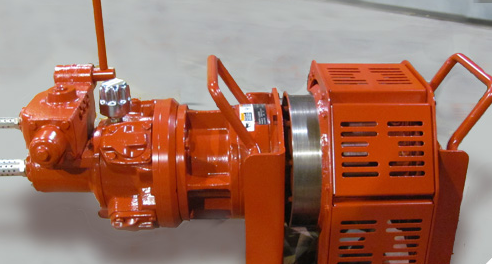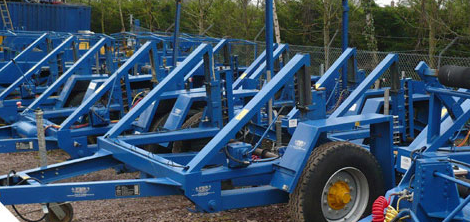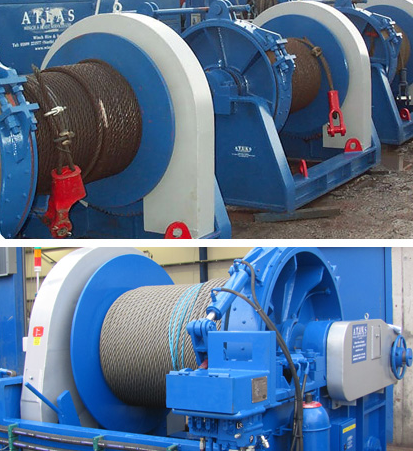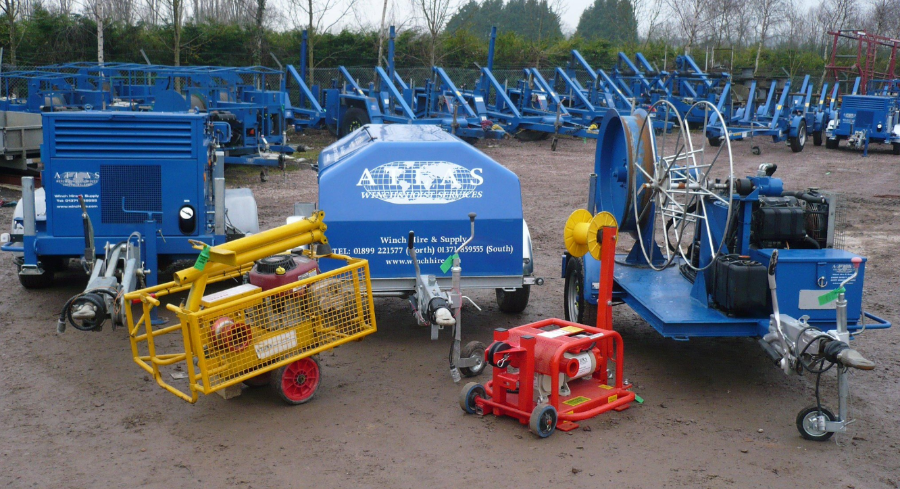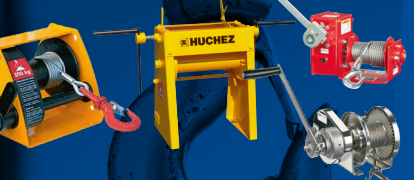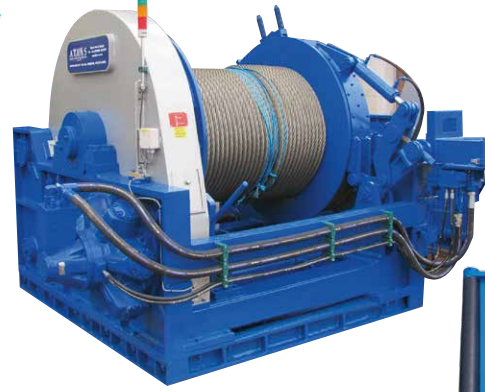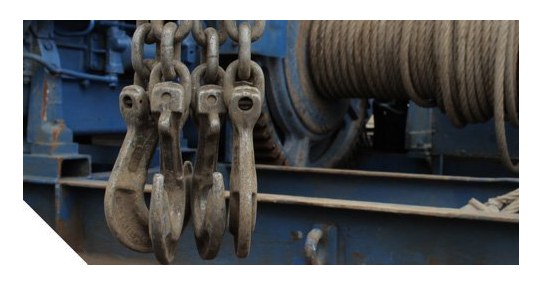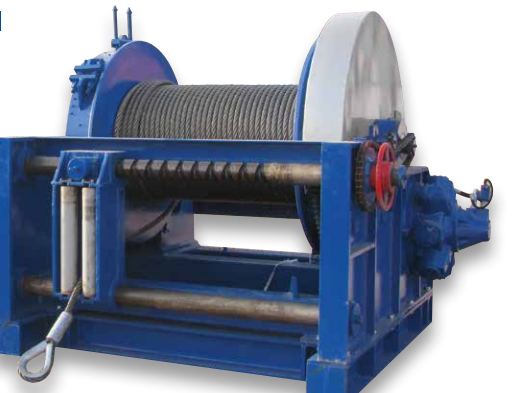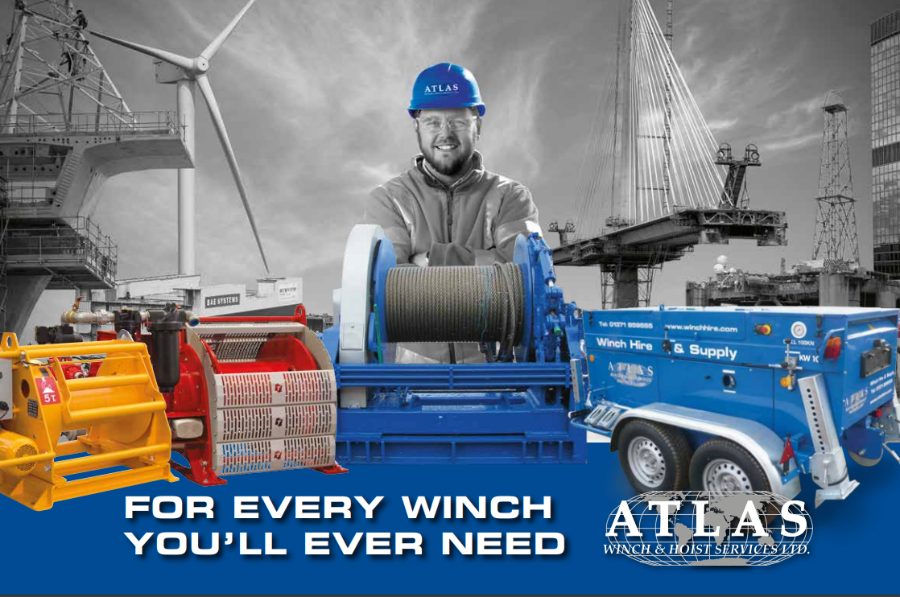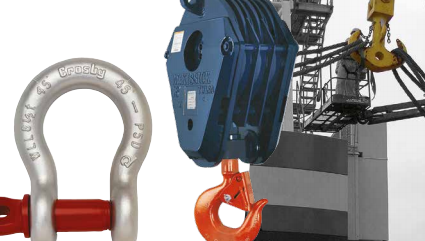DIVINE “WINCHSPERATION” – THE HISTORY OF THE WINCH
13 March 2023
Here at Atlas Winch & Hoist Services, we are passionate about what we do. Providing specialist winch services and lifting equipment solutions to a wide customer base, not only do we know the importance of winches in everyday life but we understand their greater importance over time.
From primitive ancient lifting equipment to hydraulic winch machines, the winch is a deceptively simple but incredibly powerful tool that has been a fixture in human civilization for centuries. Read on to learn more about winches’ place in history, how hydraulic and electric winches are used today, and what the future holds for winching equipment.
HOW DOES A WINCH WORK?
Before we tread back in time to understand the winch as a machine, it is important to know how a winch actually works. Quite simply, a winch machine is a mechanical device used to wind and unwind a cable or rope, which then can pull or lift heavy loads. Whether an electric winch or a hydraulic winch, they contain the following essential components:
DRUM
The central component of a winch machine and where the cable or rope is wound. It’s most commonly made of metal and is mounted on a rotating axle. The shape and size of the drum determine the length of cable or rope that can be used with it
MOTOR OR HAND-CRANK
This provides the power to wind and unwind the cable or rope. If a motor is used, it may be part of an electric or hydraulic winch and depends on the specific application of the winch machine. A hand crank is used for manual operation.
GEAR SYSTEM
The winch machine’s gear system consists of gears, bearings, and a clutch that transmits power from the motor/hand crank to the drum. The gear ratio determines the amount of mechanical advantage, which essentially means how much easier it is to wind the cable or rope compared to manually pulling it.
CABLE/ROPE
The cable or rope is wound onto the winch’s drum and provides the pulling force to lift or move the load. It is made of steel, synthetic fibre, or a combination of both, something that depends on the winch machine’s application and the type of load being pulled.
CONTROL SYSTEM
The control system allows the operator to control the winch’s speed and direction. It typically consists of a switch or lever that engages or disengages the motor or clutch, and a brake that prevents the drum from rotating when the winch is not in use.
In operation, the cable or rope is wound onto the drum by the motor or hand crank. As the cable or rope is wound, it stores energy in the form of tension, a tension which can then be used to pull or lift a load.
EARLY WINCHING MACHINES
The earliest winches were made of simple materials like wood and rope, and were operated manually. In ancient times, people utilized its ability to lift heavy objects, move them from one place to another, and perform a variety of other tasks.
The earliest reference to a winch machine or specialist winch usage is found in the account of Herodotus of Halicarnassus on the Persian Wars (Histories 7.36), written around 430 BC. The text describes how a wooden form of a winch machine and other winch equipment was utilised to tighten the cables on a pontoon bridge across the Hellespont. By the 4th century BC, Aristotle denoted winching equipment and pulley hoists as a common feature of architectural constructions.
As civilizations developed and grew, winching machines evolved along with them, becoming larger, stronger, and more sophisticated. During the Middle Ages, winch equipment and systems were used to hoist stone blocks into place during the construction of castles and other grand buildings.
As the Industrial Revolution swept across Europe and North America, the winch underwent a major transformation. New materials like iron and steel became available, and advances in machinery allowed for the creation of larger, stronger, and more efficient winches. These new winches were able to handle greater loads and could be powered by different forms of mechanical energy.
MODERN WINCHES
One of the most important innovations in the history of the winch was the development of the electric winch. Powered by electricity, the electric winch was much faster and more efficient than its predecessors. It could lift heavy loads with increased ease and its compact size made it ideal for a wider variety of industrial and commercial uses
Another major milestone in the history of the winch was the introduction of the hydraulic winch. This winch machine used a hydraulic system to generate the necessary force to lift heavy loads. It was much more powerful than traditional winches and could be controlled with greater precision. This made it an indispensable tool in many industrial and construction applications, where precision and speed are of utmost importance.
Air winch machines were yet another vital innovation in the history of the winch. Air winches are often confused with electric winches due to their similar appearance, but there is a distinct difference between the two. Electric winches, as the name suggests, are powered principally by electricity. Air winches, although powered by a pneumatic motor, the motors then direct compressed air to drums, which then rotate and move the winch machine.
This means air winches offer significant lifting force without using lots of electricity, making them ideal for remote regions where three-phase electricity is unavailable. Find out more about air winches here, as Atlas Winch & Hoist stocks a range of air winches, from portable models to larger capacities.
Today, winches are designed with computer-controlled systems and sophisticated software that allow for even greater control and accuracy. They can be powered by various sources, including electricity, gasoline, and diesel engines, and are used in a wide range of applications, from construction sites to offshore drilling platforms.
LOOKING TO THE FUTURE
The future of winches and winch equipment is likely to be shaped by several factors, such as technological innovation, increased safety requirements, and shifting industry needs. As technology continues to advance, we can expect to see more automation in winches and lifting machines. This may include the use of sensors, controls, and algorithms to optimize performance, improve safety, and reduce the risk of human error.
Safety will also continue to be a major concern in the design and use of winch machines. We can expect to see more safety features, such as load sensors, automatic brakes, and emergency shut-off systems, to reduce the risk of accidents and injuries. Equally, energy efficiency and sustainability will continue to be vital factors in the design and use of winch machines and equipment. More hybrid and electric winches will be used to minimize energy consumption and reduce emissions.
In addition, the use of advanced materials, such as composites, alloys, and ceramics, will continue to be an important trend in the design of winch machines. These materials offer improved strength, durability, and resistance to wear and tear, allowing for the creation of lighter, more compact, and more enduring systems. These will help create more versatile winch machines and winching equipment that is capable of handling a more expansive range of uses. This could include the development of multi-functional systems that can be used for both lifting and moving loads, as well as for other tasks such as drilling and excavating.
WINCH SPECIALISTS
Whether electric, hydraulic, or even wooden, at Atlas Winch & Hoist, we see the winch machine as an eternal symbol of strength and power, a testament to human ingenuity and man’s relentless pursuit of progress. In its timeless design and mechanical efficiency, the winch has been an essential tool for centuries and will likely continue to play an important role for many generations to come.
If you’re looking for an electric winch, hydraulic winch, or other lifting equipment, Atlas Winch & Hoist can help. From providing heavy-duty winching machines for the construction of semi-submersible offshore rigs to bridge launching, we have provided specialist winching equipment in a variety of industrial and commercial contexts. As a family business, we have been commended for our people-first, caring approach to customer service, making the experience with us stress-free and easy. If you need help working out what winch machine or winch equipment is best suited for your project, don’t hesitate to get in touch with our winch specialists by emailing info@winchhire.com.


